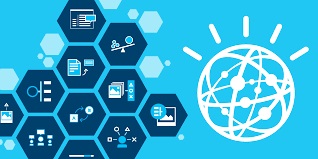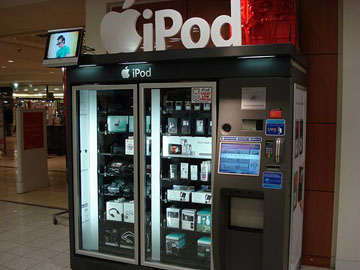Content provided by AspenCore and IBM
It is not surprising that many design engineers are using internet connectivity to enable new features in their system designs. If an engineer is designing medical equipment, an industrial machine, a field service tool, or a vending machine, the design can almost always benefit from being connected to the web (with the required security elements, of course). Today’s technology makes it easy to find sensors and IoT tools to collect information about an assets health, enabling design engineers to significantly enhance their products.
Users will immediately benefit when an asset is connected. They can read the asset’s status any time they choose, whether it’s in their facility or remote some 1,000 miles away, and perform maintenance based on what they know about the asset’s behavior. Meaning, define rules on the behavior of the asset and if the asset behaves beyond the known thresholds then schedule a maintenance appointment. However, much more can be done with the help of machine learning algorithms.
If the asset is connected and sensory data is available, the asset manager can take advantage of machine learning to leverage continuous feedback, solve operational challenges, and transform customer experiences. An engineer can implement industry-specific cognitive IoT solutions in his or her asset management to deliver rich, relevant insights and significantly enhance operational efficiency and lower overall costs on maintenance. If a designer enhances this connected system with machine learning, the customer and end-user will see immediate benefits and even greater long-term benefits.

Let’s consider the options of an asset management team working on a vending machine project for airports and hotels. This large asset dispenses music players, headphones, batteries, and other personal technology items. It is connected to the web, and the distribution company that owns the asset can read the stock quantity any time and send a maintenance person to restock it when necessary. However, much more can be done with the help of IBM’s Watson.

The asset has 16 selections that it can dispense. If a problem develops with the mechanism of one of the selections, an error message is sent to the Watson-connected monitoring system, which looks at the asset’s service manual, its complete test history, and its service notes. The monitoring system then instructs the asset to reset the motor on that item and reverse-drive for five seconds, fixing the problem without any human intervention. Perhaps this company has 12 different versions of this vending machine. It doesn’t matter; the data for each is available for analysis.
Our Watson cloud application also knows about all 18 vending machines that the company has at O’Hare Airport and another six in the surrounding area. It can determine the optimum time — based on usage rates of all items in all machines and what needs to be fixed — for sending a maintenance person to the area. This decision can also include the unusual temperature reading on one motor on one asset, a low air flow reading on a fan, and a non-operating lamp in one of the other assets. The app can even look at trends to see which products are no longer popular.
This type of insight can reap tremendous benefits, but there are still more possibilities. Using a Watson API for natural language processing, the designer can add a voice user interface that can explain the advantages of each item and then intelligently answer questions that the user of the vending machine may have. With this function, the machine’s owner could collect data on what the users ask about. This type of functionality does not have to be programmed into the system’s microcontroller (which could not handle it anyway). It uses Watson APIs along with training sessions to allow Watson to understand the system. The IBM Watson Developer Cloud has a library of APIs that you can use to create powered-by-Watson-based apps.
This cognitive computing enables design teams to create a profoundly new kind of value by finding answers and insights locked away in volumes of data. Watson can work with unstructured data in addition to structured data, like that of a database. This is the critical machine learning aspect. When it comes to text information, Watson does not just search for keywords; it actually reads and interprets text in a sentence structure because, like a person, it understands context.

Machine learning is how Watson gets wise about a particular application and information. Watson learns, adapts, and keeps getting smarter about your particular circumstances. When presented with a question, Watson generates a hypothesis and comes up with both a response and a level of confidence. This confidence will build as Watson learns more about the specific machine, the customers, and the vending machine’s environment. This is machine learning, and it can add a wonderful new dimension to your products.
Any time that a project has a machine learning aspect, it must have training. For example, Hilton Hotels is experimenting with a concierge robot to aid its guests. Each hotel will train its new robot to answer common questions about the location of things in the hotel, operating hours of the pool and the store, and the best local restaurants to have lunch. The training part of any application design is critical for success.
A designer does not have to be a large corporation to use Watson. As one of the Watson application notes describes, people are using Watson to make decisions about travel and cooking, for example, and to help with security analytics. Many applications can benefit from Watson’s intelligence.
Anyone can register to try out all of the tools and functions available in Watson. Start by visiting the What is Watson website, learn more about deep learning with this PDF document, or take advantage of the technical webcast series, “Building with Watson.”
The cost of the Bluemix-based Watson service is on a pay as you go and subscription basis. There are absolutely no upfront costs. In the last 75 years, we saw the tabulator era of the '40s and the programmable computing era from the '50s to the present. Now we have entered a new computing era in history — learning computing.
Additional Information:
- Learn more about Watson IoT Platform
- Start using Watson IoT Platform for free
- Engage Machine Learning for detecting anomalous behaviors of things (Recipe)
- Get certified on Watson IoT Platform with the Developer’s Guide to IoT
Related Blogs:
Related Recipes:
Advertisement
Learn more about Electronic Products Magazine





